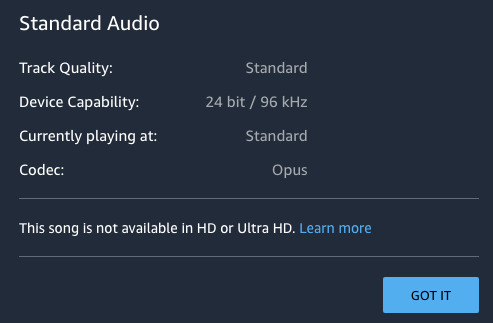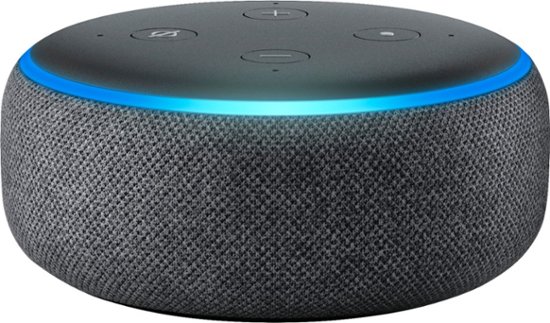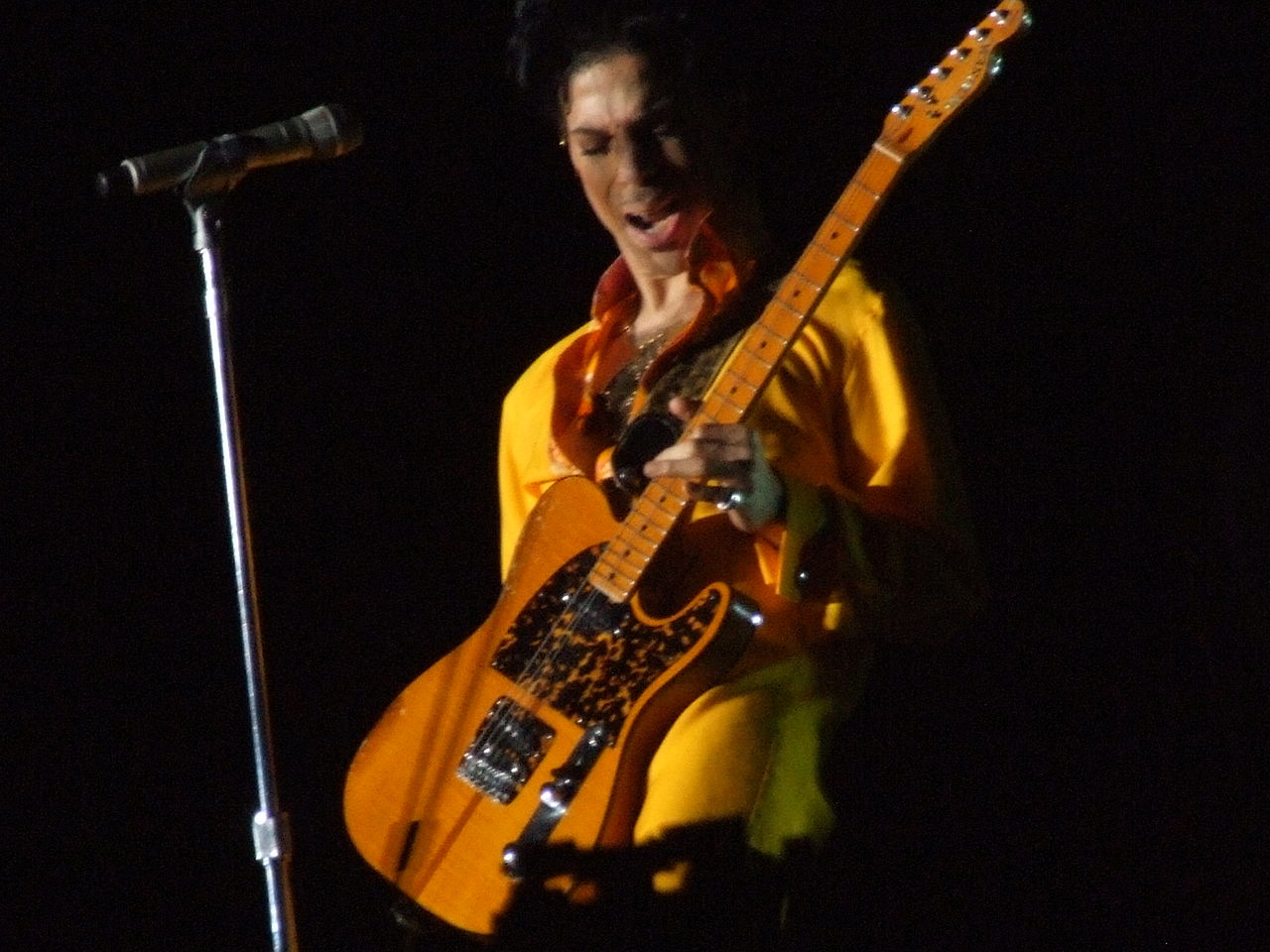Amazon Music HD & Ultra HD: A Music Lovers First Review
I have to admit, I feel a bit lost and unsure of what to say. I want to do a dance and shout “I told you so!”. If you are a new reader to my site, you need to know that I have been on a crusade against lossy music for many years and I finally got what I was asking for.
So much to do. So much to change. So many articles are now out of date. We Saved The Audio!
Amazon Music is the first of the big streamers to offer 24bit streaming in the US. Tidal has been lossless for several years but stuck at 16/44 and with a smaller catalog.
Amazon is also using FLAC, a true lossless, open format, so there’s none of the isn’t MQA still lossy? controversy or licensing fees needed with Tidal’s choice of the controversial MQA format.
I honestly feel like Amazon Music HD’s product managers have been reading this site the last 6 years. It feels built for people like me! You are our quality all-star Amazon — #SaveTheAudio !
I can also tell that the Amazon Music managers enjoyed the short-lived Pono ecosystem, as the Amazon Music HD store, styles, and language are very similar to Pono Inc.’s output (albeit short-lived).
Neil Young’s Pono brand gambit succeeded in that it pushed uncompromised sound quality and listening experience with no trickery. The product was very good but the business model failed against streaming. (BTW If anyone would make a Pono II that streams Amazon Music HD we’d be all set).
But this is Amazon, an industry leader, so what they do matters. This ain’t no crazy rock star project. The nomenclature Amazon uses sets the rules.
Here’s how Amazon is splitting up their catalog:
| Badge | SD | HD | Ultra HD |
| Description | Standard Definition | High Definition | Ultra High Definition |
| Stats | lossy (mp3/similar) 16 bit 44k | lossless 16 bit 44k (CD) | lossless 24 bit 44/48/88/96/192k |
| Streaming Stats | bitrate up to 320k | avg. bitrate 850k | avg. bitrate 3730k |
Perfectly clear to me. That’s where I have my lines drawn also. My only change would be to call SSD SSD – Sub-Standard Definition.
I know that Neil decided to go with Pono’s hi-res starting at 16/44 lossless (CD), and he took some criticism for it, but he gets trolled no matter what he does. Neil was fighting the fight against SD being all we got.
I have always pushed for 24 bit as the bottom line for the top of the line…. and that’s where Amazon went.
If you are skeptical, just listen for yourself.
In fact, I want everyone who’s ever commented on an article or post regarding digital audio quality to go listen. Get your free 3 month trial and listen. Snark amazon if you dare.
Listen on everything you can. So far I’ve tried Amazon Music HD streaming to/from 3 of my devices:
1 – Lenovo Thinkpad X1, circa 2018
2 – Apple iPhone 6, circa 2014
3 – Apple Macbook Pro Core 2 Duo, circa 2010
All three show a noticeable improvement when streaming HD or Ultra HD music from Amazon as compared to lossy services.
I’ve never heard the Thinkpad or iPhone sound better! The macbook, however, is my production computer and is hooked to a nice 24-bit audio interface from Focusrite, so it usually renders this nicely (I usually work at 24-bit resolution).
I have to admit I was wrong in saying that there’s probably no point in streaming 24-bit audio to mobile phones. My 5 year old iPhone actually rendered up to 24/48 and it sounded pretty good! Not pono good, mind you, but better than any lossy files ever sounded.
This is a standard phone that sounded at least as good as most quality CD players sound, and that’s better than AAC or MP3, and I could tell a difference immediately.
It was the best I’d ever heard an iPhone sound. I even notice when it (rarely) steps down to SD quality. It’s like going back to the 2000’s.

I have only had 2 dropouts in several days of testing, so bandwidth has not been an issue. Of course, network coverage and data speeds have everything to do with your provider and your locations, and nothing to do with the quality of the files being served.
Bottom line – if you can stream Netflix or Hulu or Amazon or even Youtube video, you can definitely stream high resolution audio.
Fuck yeah!
The service itself is pretty standard – search, browse, click things to jump around and add to playlists or your queue. The desktop clients are pretty good, and stable so far. I use the Windows 10, OS X, and iOS clients daily.
I really like the transparency about each track. Each track has a popup that tells you:
- Track quality – the best version Amazon has to stream to you
- Device capability – the best that device can render at that moment based on device hardware and network conditions
- Currently playing at – what was decided based on the two above
Sidenote – I don’t know the details of their transcoding but I’ve seen several tracks that list as Ultra HD but my device plays them at a lower resolution or even HD only. I think this is due to a combination of network conditions and maybe transcoding issues.
For instance — a track available at 24/96 played on the iphone will usually play at 24/48, the max the iphone can play. Makes perfect sense, and it’s a native deduction to divide sample rate by 2.
But sometimes, I think I’ve detected that same song playing at 16/44 from the same iphone session, which makes me wonder if Amazon keeps multiple resolutions of each file and then determines, based on network conditions, which to stream.
I don’t think it’s transcoding from 24/96 to 16/44 with dither just to stream to you that one time, but I don’t know. Amazon is capable of almost anything. But I doubt it. I think they have multiple resolutions of items in their catalog, and the system is smart enough to stream out the best possible.
Maybe 1% of tracks stream to me in SD (lossy) even though my devices clearly are capable of better. I chalk that up to spotty network conditions, or a really bad music distributor that has only stocked Amazon with mp3s.

Right now I’m streaming Prince to the Thinkpad. The track is available at 24/192 and the Thinkpad is playing it at 24/48. That’s a huge step forward, even if the gear to play it isn’t mainstream yet.
This same song will stream to my mac at 24/96 (it’s max) and my phone probably at 24/88. I don’t own anything that can stream 24/192… the PonoPlayer can render 24/192 but no streaming. Overall this setup is very smart and should help educate people about what they are hearing.
One thing I’m not happy about is the lack of a PS4 client. Amazon has free clients for many other platforms but I couldn’t find one for current playstation. I’d love to hear the audio specs in that thing. Maybe it’s coming soon.
I also haven’t tested with my Echo Dot speaker thing yet. It will be interesting to hear what Bluetooth compression does to this service.
UPDATE – we stream from iPhone to the Echo Dot all the time now. Sounds fine, slightly better than lossy, but it’s in a corner of a loud kitchen so it’s only marginally better. But no incompatibilities or issues to report.

So yes, in summary, in 2019 you can FINALLY stream 16/44 lossless and even 24-bit audio right to your pocket, for under $20/month.
It’s worth it. Goodbye lossy!
Even though I’ve been waiting for this upgrade since 1996, it truly is better late than never. No more fighting pseudo-scientists on message boards. Just hear for yourself!
